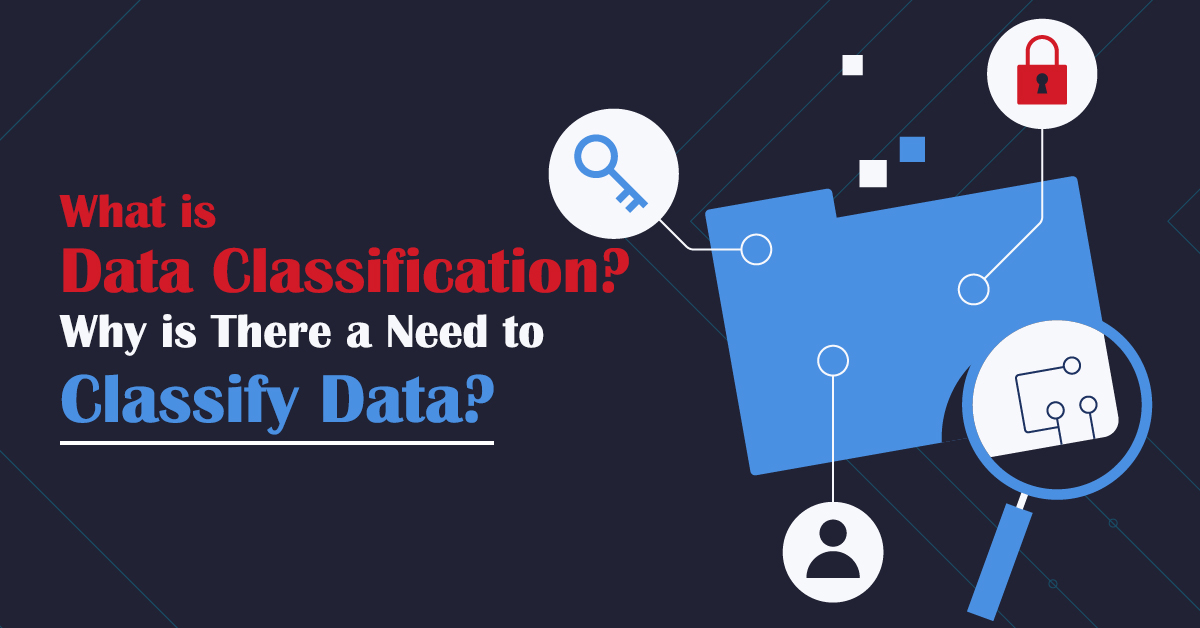
“Fragile! Handle with Care!”
You must have definitely seen this tag on boxes and cartons, which is descriptive of sensitive and delicate material so that it can be handled carefully. Well, data is no exception when it comes to protecting sensitive information.
With fierce competition pushing eCommerce businesses to maintain a huge product portfolio, the chances of product data issues also increase. Thus, it is important for businesses to keep data issues at bay. However, in order to protect your sensitive data, you need to know exactly what data you are trying to protect. To put it simply, you need to classify data or what we call eCommerce product data classification.
To begin with,
What Is Data Classification?
As the name suggests, it is a diversified process of categorizing data within your database, according to your business goals making it more secure. Implemented as part of a layered security strategy, it enables organizations in protecting their data against a variety of threats while unlocking the full potential to drive innovation and profitability.
Let’s put it this way –
Your business already has a database which contains a large amount of raw data. Now, you know that raw data is extensive and bulky to handle, making it difficult for you to draw any meaningful conclusions.
On the other hand, classifying data makes it simple, efficient and profit-oriented. Thus, the importance of data classification for business growth is phenomenal.
When Should You Go For Classification Of Data?
There is more than one way for product data, content and catalog management in eCommerce, depending upon your business goals. However, as technology advances, your approach might be outdated and hamper your business, knowingly or unknowingly. But how do you figure out whether or not you need to change the way you classify or categorize your products and data? Yes, it’s the indications you get from time to time. Here, are some of the most common ones:
- Unexpected errors such as incomplete product descriptions or slow updates.
- Delay in campaigns wherein your marketing strategies don’t work anymore or you find it difficult to finalize your projects/tasks.
- Declining productivity and scalability wherein you don’t get hold of whether the product data is correct and end up manually verifying all the entries.
In case of any such signs, you must start classifying your product data and leverage data categorization services for the best results.
Benefits Of Data Classification
1. Synchronization
Considering the highly competitive eCommerce market, there is a dire need to organize product data on multiple channels. Data classification ensures that your categories remain consistent across all marketplaces, including Amazon, eBay marketplace management services, Google Shopping etc.
Effective category organization not just ensures content alignment across channels but saves you time that was invested in the sprawling product information.
2. Prevent Internal Threats
Threads that stem from internal loopholes or employee weakness are extremely difficult to prevent. They can be malicious, involving intentional or accidental data theft. In such cases, data classification, combined with identity and access management technology, helps in preventing data theft allowing employees in accessing documents on a need-to-know basis. This will, in turn, map an employee’s access privileges to the sensitivity level in a document’s metadata, preventing them from manipulating and dissipating any kind of information.
3. Decrease Indexing Speed
Several business owners often tend to overlook indexing speed with spreadsheet product data management approach. They wait for the changes to populate across in-store databases and other platforms, without knowing the fact that this might be hampering the indexing speed.
However, when you classify data, structured information is optimized and databases become more organized. Resultantly, it is easier and quicker to index and populates product updates across properties.
4. Eliminate Outsider Threads
Data classification not just keeps a check on internal threats but prevents unauthorized third-parties from accessing information. It helps businesses in encrypting data and restricting access based on certain factors such as the viewer’s identity, time spent on the file etc. Thus, you can rest assured of your critical business data and maintain the utmost security.
The Right Way To Classify Data
Data classification provides a clear picture of all data within an organization’s control and an understanding of where data is stored, how it can be easily accessed, and how to protect it from potential security risks. If done properly, it facilitates data protection measures and promotes employee security compliance.
Let’s have a look at the steps for successful eCommerce product data classification:
- Analyze the current setup: The first and the most effective step for effective data classification is viewing the location of your current data and regulations that pertain to your organization. In other words, you must know what data you have before you can classify it.
- Create a data classification policy: Create a policy that states the critical data protection principles. Staying compliant with these is essential to effective classification.
- Prioritize and organize data: Once you have figured out the data location and policy, start with classification by deciding the right way to tag your data based on its sensitivity and privacy.
Ready To Classify Your Data
The quality of product data can make or break the success of your eCommerce store. Right from the time you create data, you need to take utmost care of the data you possess. This is where data classification helps. It can adequately protect your data, store it properly and manage it well.
At Data4eCom, we deliver end-to-end product information management services that propel your eCommerce business ahead of the competition. Our talented professionals are vastly experienced and always abide by the best practices for data classification. They can classify your product data without mixing codes and schemas to give you ready to use catalogs within a quick turnaround time.


